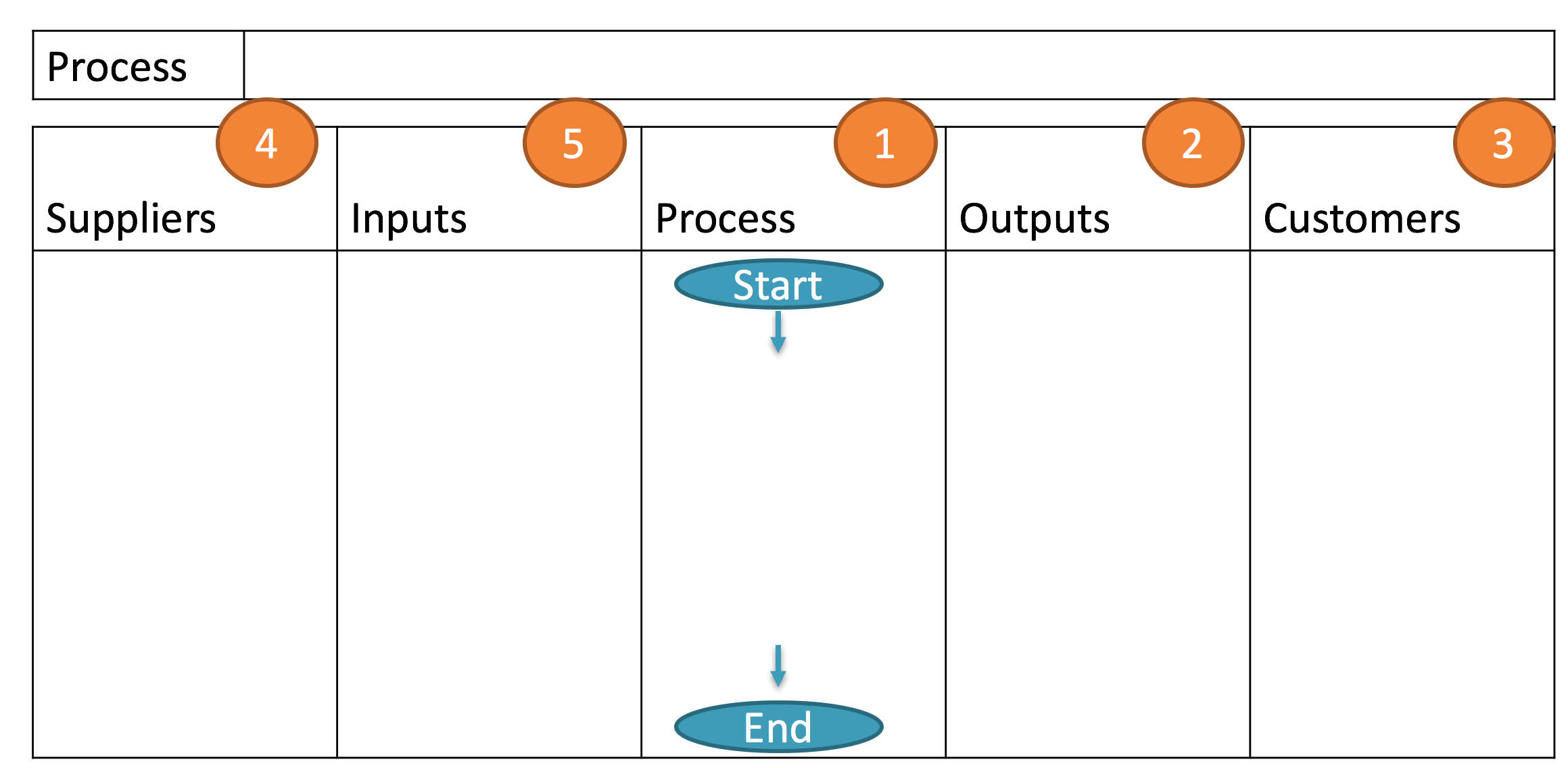Using a SIPOC to get to know your process

By Olga Murdoch, Agile Lead.
What is the tool used for?
A SIPOC is a diagram with five columns that serves as a high-level illustration of a process and its’ scope.
SIPOC is an abbreviation of: Suppliers, Inputs, Process, Outputs, Customers. These headings provide a template for defining a process at the start of a project.
A SIPOC is best created by a team of people covering all aspects of the process in question and is used to identify all relevant aspects of a process improvement project before work begins.
Why should someone use it?
It is important to create a SIPOC when you are planning to start a process improvement project or activity. Starting with a SIPOC rather than going straight to process mapping ensures that no high-level process steps gets missed. It also provides a structure way to discuss the process and to clearly define what is in and out of scope.
A SIPOC is also really useful to have when documenting Standard Operating Procedures (SOPs) or training staff new to a process so that they understand the process at a high level.
Directions on how to use it?
Step 1: Define the first and last step of the process in scope in the process column.
By starting with the first and last step of the process you invite the group to agree to a well defined scope from the outset.
Step 2: Illustrate the 3 to 5 high level process steps between the beginning and end points
Leave the detailed process mapping for later and start with the key steps. For someone very close to the process it might be hard to step back and identify the 4 or 5 steps that the process is comprised of. This is where having the right people in the room is important – as well as a facilitator who can help draw the information out of participants.
Step 3: List the outputs from each of the process steps illustrated, including the first and last process steps
The output of a process step is the information, service or product that a person or group uses.
Step 4: List the people (at group/role level) who receive each output in the customer column
When a person or group uses the output of a process, this makes them a customer of that process. Customers can be both internal and external to the process.
Step 5: List the inputs that are necessary for each process step in the inputs column
An input to a process step is the information, material or other resource that is necessary for the process to function.
Step 6: List the people (at group/role level) who provide each of the inputs in the suppliers column
The people, groups or systems who provide the inputs to each process step are called the suppliers.
What now?
Look at the high-level illustration of your process and identify any opportunities for improvement. Take the particular section you have highlighted into a process mapping exercise to better understand the details of the process where the problem(s) lie.
Why not try out this tool yourself, and let me (olga.murdoch@ucd.ie) know how you get on.
Contact agile@ucd.ie for support on using tools such as this and others.
